Narrative Writing for class 5 English
Concept : Transitional Words and Phrases With Onomatopoeia Words
Onomatopoeia words are highly effective in narrative writing. It won't pull your reader out of the story because it's part of the overall flow of your descriptions. Transitional words and phrases link paragraphs and sentences, so there is no break between ideas. In this chapter, students will learn to use both together in narrative writing.
In this learning concept, students will learn:
- Onomatopoeia meaning and examples.
- Onomatopoeia words list with onomatopoeia sentences.
- Transition words meaning with examples.
- Use of transitional words and phrases in narrative writing.
- How to use sound words with transitional phrases in a sentence.
Every concept for class 5 English students has been covered using examples, illustrations, and concept maps. Students can assess their related skills by solving the two printable onomatopoeia worksheets given at the end of the page.
Download these worksheets and check your answers with the worksheet solutions provided in PDF format.
What is Onomatopoeia?
- Onomatopoeia is when a word is pronounced the way it sounds. They are mostly used in poetry and in stories because of their sound. It can evoke emotion that can help to make a poem or a story more interesting.
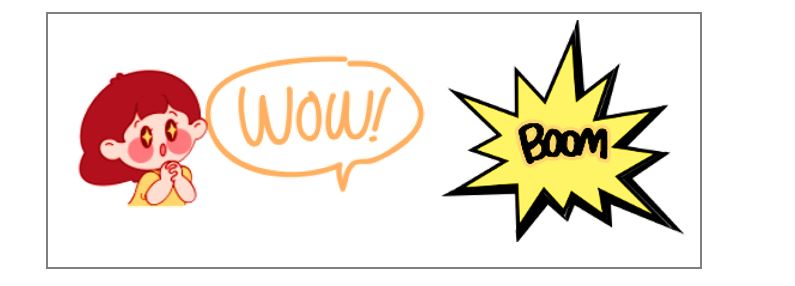
- These words appeal to the sense of hearing, and it is used to bring a poem or a story to lif
Types of Onomatopoeia
Many times, an onomatopoeic word is used based on the letter combinations within the word. These combinations come at the beginning, but a few come at the end also. Onomatopoeia can be grouped into several categories as shown below:
Examples of Onomatopoeia relating to the following components:
| Water Examples |
Vocal Examples |
Collision Examples |
Animal Examples |
Air Examples |
|---|---|---|---|---|
| splash | ahem | bang | bark | flutter |
| drip | chatter | clap | buzz | fwoosh |
| spray | giggle | clatter | chirp | swoosh |
| drizzle | grunt | crash | hiss | whoosh |
| dribble | growl | crunch | howl | whizz |
| babbling | moan | knock | purr | whip |
| gulp | slap | tweet | waft | |
| murmur | smash | meow | gasp | |
| squeal | thud | neigh |
Examples of Onomatopoeia in English Literature
Let’s take a look at how this has been used in stories and poems.
- Let’s take a look at how this has been used in stories and poems.
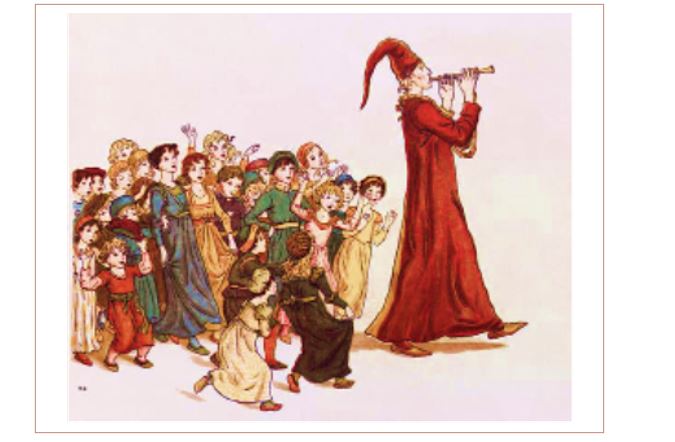
I'm sure my poor head aches again
I've scratched it so, and all in vain.
Oh for a trap, a trap, a trap!
“Just as he said this, what should hap
At the chamber door but a gentle tap?
Bless us, cried the Mayor, what’s that?
(With the Corporation as he sate,
Looking little though wondrous fat);
Only a scraping of shoes on the mat?
Anything like the sound of a rat
Makes my heart go pit-a-pat! - A text from ‘For Whom the Bell Tolls’ by Ernest Hemingway
He saw nothing and heard nothing but he could feel his heart pounding and then he heard the clack of stone and the leaping, dropping clicks of a small rock falling.
What are Transition Words and Phrases?
- Transitional words are frequently used to join the different information or parts of the story.
- Depending on the reasoning of the sentences, transition words can indicate time, sequence, opposition, or agreement.
- Transition words are linking words that create a natural thought flow. It enhances clarity.
- For a smooth writing structure and to connect ideas between sentences and paragraphs, transition words are used.
What Transition Words to Use for Narrative Writing?
Below given common transition words used in story writing.
| Examples | |||
|---|---|---|---|
| and | before | nevertheless | accordingly |
| or | otherwise | unfortunately | but |
| when | however | recently | for |
| after | therefore | although | for example |
| so | consequently | at last | in conclusion |
How to Use Onomatopoeia with Transition Phrases in a Sentence?
Let us see through a few examples of to use Onomatopoeia can be used with transition phrases in a sentence.
“She was late, consequently, she ran through the glass door- smash and hurt her nose”.
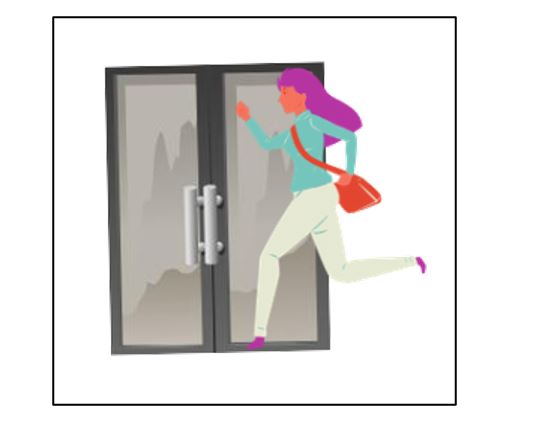
“While I was singing in the back seat of our car. Immediately, I heard the honk of a truck beside our car.
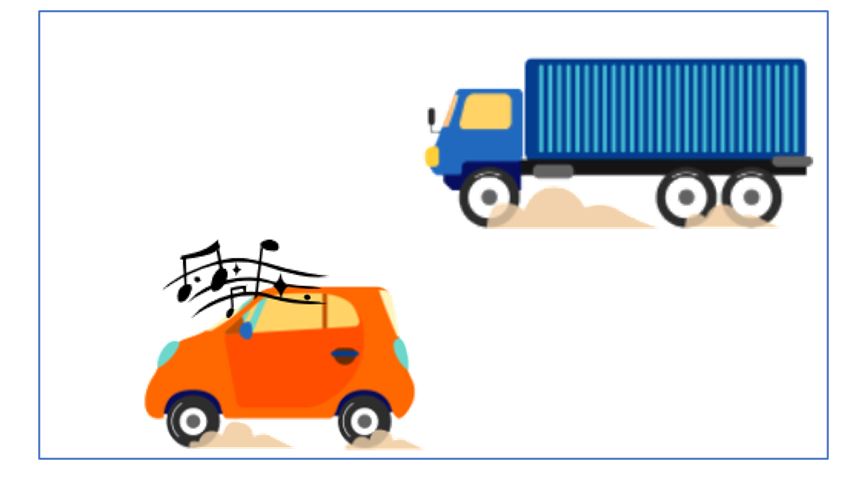
Common Mistakes
- Do not use too much of sound words in the dialogues of a story. Use it carefully for maximum effect.
Example:
Avoid overusing words:
“My name’s Namita, although most people call me loudspeaker these days,” she grumbled.
“Why?” I asked.
“Because I love to gossip about people,” she giggled.
“Well, I am a gossip monger,” she confessed.
“Really?” he whined.
“Yeah.” I roared.
The above conversation is filled with onomatopoeia. We have grumbled, giggled, whined, and roared It seems way too much. - Using transition words in the wrong context makes it look too formal or too casual for the communication.
Example:
I dressed, took my bag, and therefore, I’m ready for the party.
The above usage of the transition word therefore makes it looks too formal.
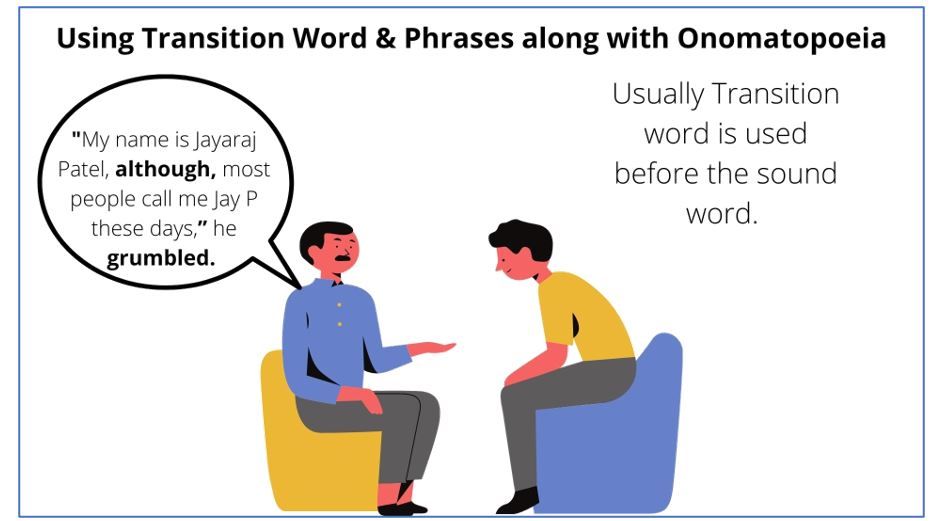
Concept : Personal Recount Meaning With Graphic Organisers
Recounts are a way of retelling an event or an experience. They are usually written in the past tense as it is a description of something that has already happened. In this chapter students will know, recount meaning and to plan their recount writing through graphic organizer templates. With these organisers students can make attempts to recount daily events. Students of class 5 will know to retell an experience.
Using such prototypes, students can brainstorm emotional words, action verbs and descriptive words to include in a recount.
In this learning concept, students will learn:
- To write a recount using graphic organizer template with examples.
- Types of recount mapping with examples.
- Common mistakes to avoid in a personal retell.
All English grammar concepts for class 5 have been covered using examples, mind maps and illustrations. To assess the understanding of these concepts, students can easily access narrative writing worksheets grade 5. The solutions to these worksheets are also available in easily downloadable PDF format.
What is Personal Recount Mapping?
- A personal recount mapping narrates an experience that occurred in the past. A Recount is a recap of an event or sequence of events.
- The recount can be written in both active voice and passive voice.
- The aim of this writing is to inform and/or entertain the readers.
- It may pinpoint one particular section or maybe the whole story in a chronological sequence to narrate in what order things had happened.
- There is some personal touch to this genre of writing; that’s how it appeals directly to the reader.

Types of Recount Mapping
Have a look at the types of recount mapping. They are as follows:
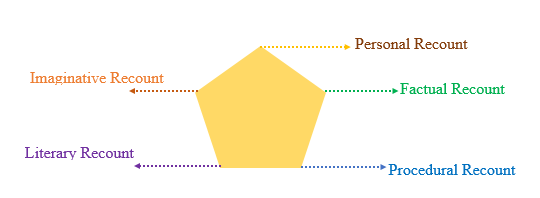
We will focus only on personal recount mapping in this chapter.
Personal Recount Mapping through Graphic Organizer
Choose a topic and use a graphic organizer for your personal recount.
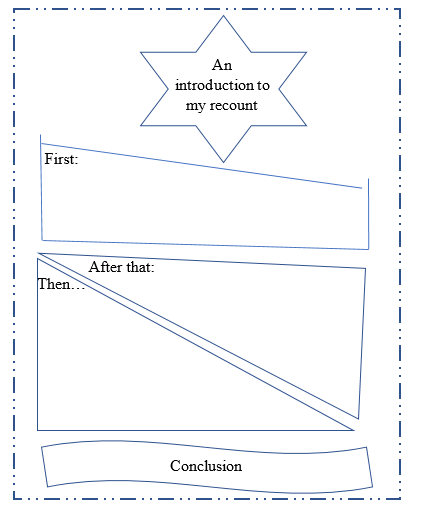
Example of a Personal Recount
Title: A Day at the Zoo
Yesterday, mid-morning my family and I went on an outing to the Alipore Zoological Garden, Kolkata.

In the morning, we got ready and went to the zoo. There was a huge line, so we had to wait for a while to get in.
After we entered the zoo, we went straight to the enclosure for the Lions. My brother and I were so excited to see them. we happened to see lion cubs too. They were so endearing and playful. Then we visited our National bird, the peacock. What a beautiful bird! Thereafter I saw the chimpanzee, the crane, colourful birds, tiger, elephant and many more.
At lunchtime, we got the fried rice prepared by Dad and chilli chicken made by mom. We had a delicious lunch together.

In the afternoon, we visited the aquarium. My little brother was excited to see the various kinds of marine fish, tropical fish, and sharks. “Wowww, how wonderful they look!”, he exclaimed.

Slowly the day came to an end. We were very tired. We wanted to have ice cream but since we were too tired, my father drove straight home.
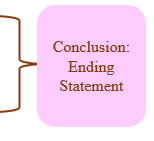
Common Mistake
- The section wherein the past events are described in a recount must be written in the past tense. If any analysis of the experience is given, then present tense can be used. Mostly first person and third person are used.
- The introduction should be able to grab the reader’s attention easily as it sets the tone for the entire narrative. It should be able to throw some light on the topic, the location, and the timing of the event.
- The body consists of the actual recount of past events. Once the setting is exposed by the introduction, the body deals with the main story where the vents are described in sequence.
- Unlike the other narrative styles, the conclusion need not reinstate the main ideas of the story nor its role is to provide any set of arguments that warrants the body. On the contrary, it may look deeply into questions like ‘why’ or even explain the falling action or provide a resolution.
- Make use of connectives or linkers especially the ones that indicate time. For instance, meanwhile, next, finally, then, etc.
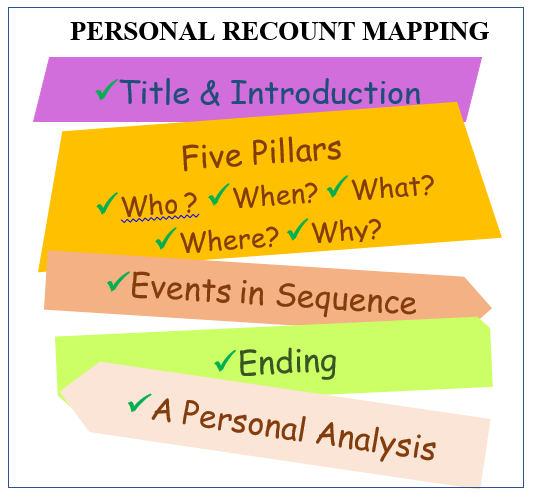
Concept : Describe a Personal Experience
How would you describe a personal experience? Which experience would you like to narrate? In this chapter students of class 5 will know to describe a life experience and everything else related to it. Experiences are a part of your life that could be good, bad or unforgettable! A few simple steps to follow and you will be able to narrate your experience like a pro.
In this learning concept, the following are covered:
- Characteristics of a personal experience description.
- Points to focus on while you describe your experience with in-depth examples.
- Common mistakes and aspects to consider as you narrate an experience in about 80-100 words or more.
All English grammar concepts for class 5 have been covered using examples, mind maps and illustrations. Students can easily access these personal narrative worksheets to evaluate their understanding of the concept. The solutions to these worksheets are also available in PDF format.
Definition:
- Describing an experience is a kind of narrative writing. It is different from the usual way of describing an object or nature.
- The purpose of a narrative essay regarding a personal experience is to show the writer’s reflection on the experience, how it affected the writer, its impact, and what the writer learned from it.
- Readers enjoy it when they find the narrative quite fascinating; one in which they can feel involved; something that opens up their own feeling that somehow got suppressed with time; something they can recollect from their past, as they connect to the experience. In short, it brings life to the experience.
- The purpose is to show readers why the experience is a significant part of your life.
How to Describe a Life Experience?
Follow the guidelines given below while narrating a life experience.
Give vital details regarding the background and the setting. This will help the readers to understand where and when the life experience happened.
Example:
Topic - Relocation to a new city after class 4 After I moved to Delhi in my aunt’s house, the place I stay at is near the railway station. There were many street food stalls nearby. The weather in Delhi is extreme. It can be too hot in summer and winters are too chilly.

- Purpose
- Give your narrative writing a definite purpose. This could be the reason for you to do a particular thing.
- Give examples of your life experiences to support the major theme.
Considering the above topic -Relocation to a new city after class 4, You can also mention the list of things you are looking forward to do in the new city. It could be making new friends, learning a new language, etc.
I had moved to Delhi after passing class 4, as my family was shifting to Delhi. My parents had planned this move since some time, and we were finally going to live near our relatives. - Mention Personal Reflections
Discuss the importance of the experience. Mention good experience, for instance, if anyone in your new school tried to make friends with you and make you feel comfortable.
Example:
However, along with me, another girl had joined, Mandrita. For the first few days, we never spoke to each other. One day, the class teacher gave us a group activity, and Mandrita and I were in one team. She really helped to complete the activity. From that day onwards, we started talking . She would help me with difficult subjects like Maths. - Use Dialogues
Include dialogue in your personal experience to make it more captivating. You can write about a conversation you had with any of your family members or close friends. Use specific descriptions, descriptive verbs, and positive or negative moods.
Example:
“Last week was my birthday Mandrita wished me, and she said to me, “Happy birthday, Riya, I hope both you and I learn Spanish, so next time we can wish each other in Spanish”. - Conclusion
In the concluding paragraph, you can end on a positive note or with a thought-provoking ending to the readers. This means you have to take away thoughts that would have a positive effect on the experience has had over you.
Example:
The school's annual sports was coming up. I wasn’t interested to participate. Mandrita and my class teacher encouraged me to participate in the relay race. With great reluctance, I did the same and eventually gave it my name. Most of my classmates were sure that I would not be able to do it. I wanted to prove them wrong. On the final sports day, when I got a medal for the relay race, my classmates rejoiced, and everyone congratulated me. Well, after this, I made more friends.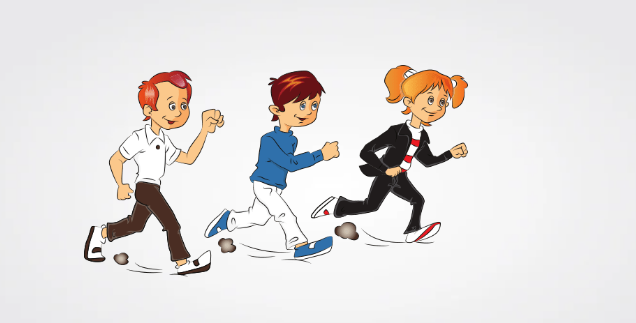
Common Mistake
Consider the following aspects while writing a narrative essay:
- Maintain a single point of view throughout the narrative. A narrative essay should ideally be either in the first person (I, we) or the third person (she, he, it) to narrate the experience.
- TShould maintain the proper order in which things happened: Beginning, middle and an end.
- Should answer the ‘wh’ questions like what, when, where, how and why in sequence.
- Do not forget to use linkers like ‘however’, ‘moreover’ etc.
- Tense: Usually, narrative essays describing personal experiences are written in the past tense. However, an essay narrating an important past experience is also written in the present tense.
- Do not confuse the mood of composition with the writer’s attitude or tone towards the narrative. The tone can be positive, neutral or, negative.
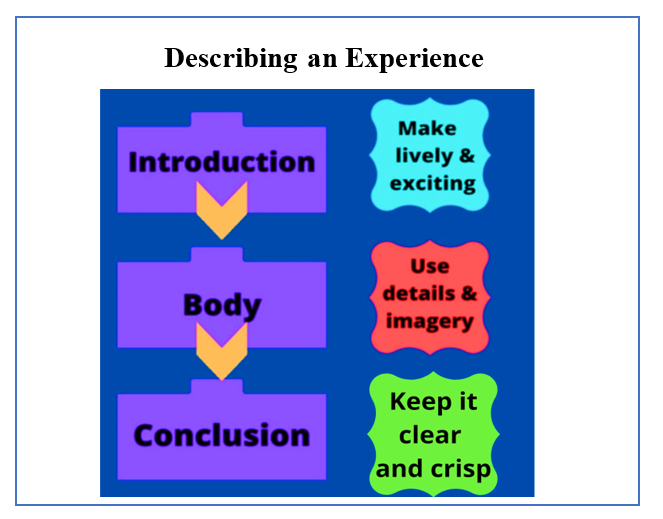
CBSE Schools In Popular Cities
- CBSE Schools in Bangalore
- CBSE Schools in Mumbai
- CBSE Schools in Pune
- CBSE Schools in Hyderabad
- CBSE Schools in Chennai
- CBSE Schools in Gurgaon
- CBSE Schools in Kolkata
- CBSE Schools in Indore
- CBSE Schools in Sonipat
- CBSE Schools in Delhi
- CBSE Schools in Rohtak
- CBSE Schools in Bhopal
- CBSE Schools in Aurangabad
- CBSE Schools in Jabalpur
- CBSE Schools in Jaipur
- CBSE Schools in Jodhpur
- CBSE Schools in Nagpur
- CBSE Schools in Ahmednagar
- CBSE School In Tumkur











